
How Enterprises Can Use the PQAI API to Build Novelty Checking Features
You have already witnessed how powerful the PQAI API can be for semantic patent search. Now you want to bring that same intelligence into your
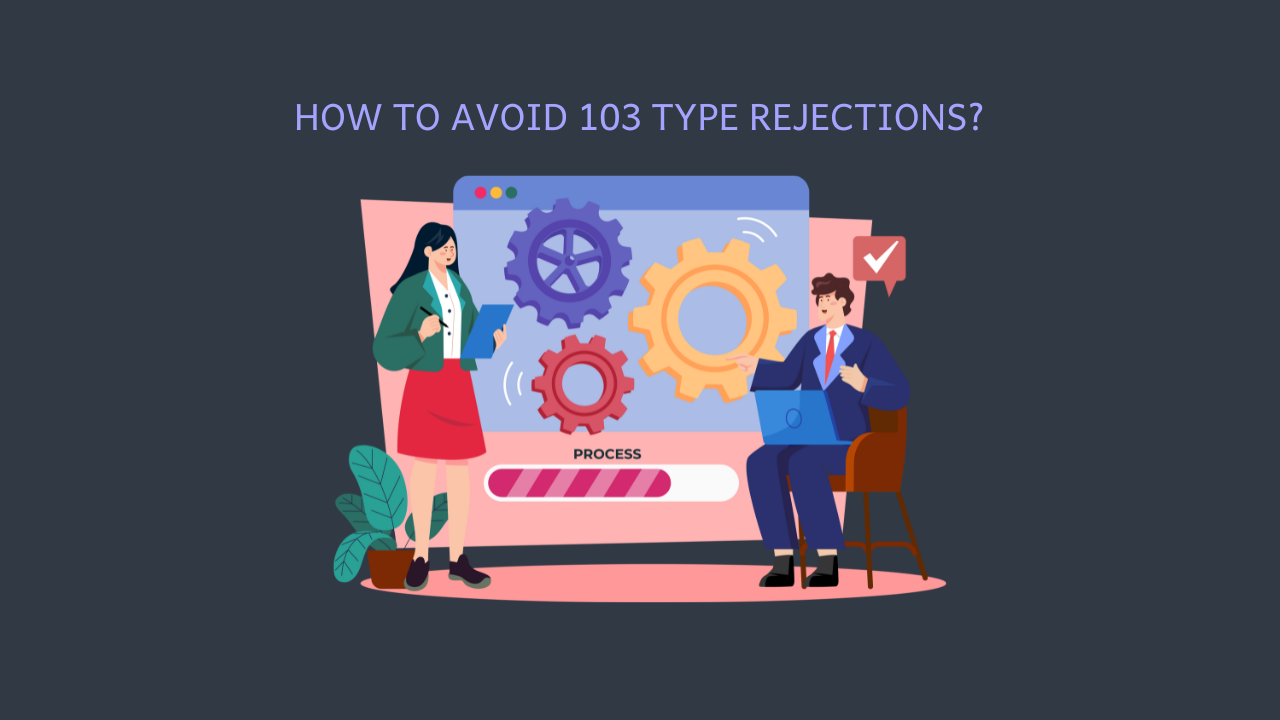
Looking forward to patenting your invention? The predicament of getting a rejection always lingers. Often, it may be possible to overcome the rejection, but it unnecessarily delays the allowance. Do you know what the most common reason for rejection is? – It’s § 103 or obviousness.
Did you know: § 103-type rejection accounts for the majority of all patent rejections at the USPTO. It is not only common, it is expected. In fact, as of 2024, 103 rejections contribute to 36% of total rejections by USPTO examiners.
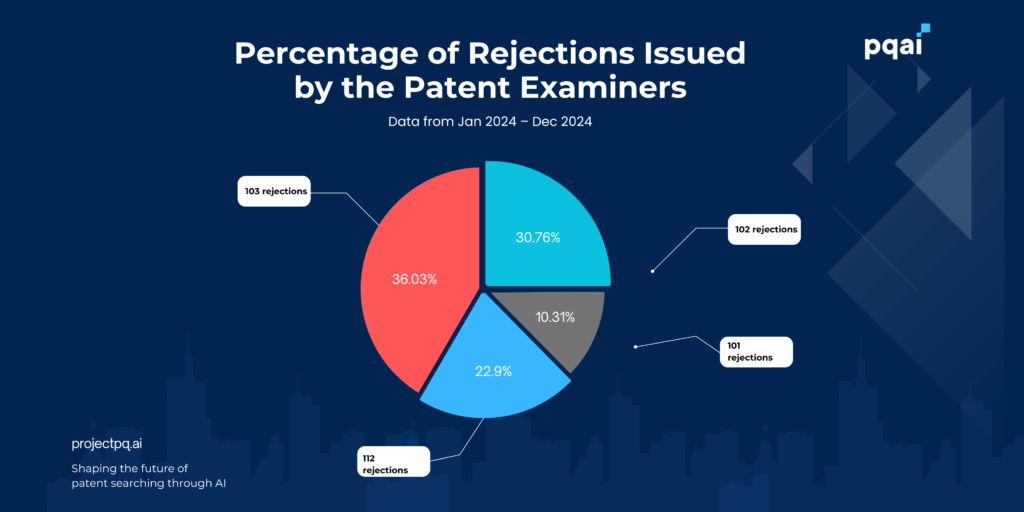
So what is a 103-type rejection?
In simple terms, you receive one when the examiner finds more than one document that jointly represents your invention as an “obvious improvement.”
Let’s say the idea is – “An unmanned drone for fighting forest fires that uses canisters filled with dry ice as fire extinguishing material. ”
Now if there exist two prior art documents:
i) One that describes the use of unmanned aerial vehicles to fight forest fires.
ii) And another that describes the use of powdered carbon dioxide (dry ice) to extinguish the fire.
Then, the idea shall be deemed obvious. You want to avoid this instance lest you want to spend hundreds of dollars in filing fees and face rejections. So what is the solution? A patentability search can help.
At the same time, practitioners often point out that 103 type rejections are not always straightforward. The rationale for combining references can sometimes feel subjective or thin, and reactions to this vary widely. Some applicants view it as a natural part of the process, while others see it as an area that needs more consistency. What everyone agrees on is that obviousness rejections are common, costly, and time-consuming to overcome.
This makes early preparation critical. By running a combinational prior art search before filing, you can surface the very kinds of reference combinations examiners are likely to cite. Instead of being surprised at prosecution, you can strengthen your claims, refine your strategy, and reduce the chance of delays. PQAI helps you do exactly that.
Let’s run this example through PQAI, our open-source search engine that helps identify combinational prior art.
We used the following idea query: An unmanned drone for fighting forest fires that uses canisters filled with dry ice as fire extinguishing material.
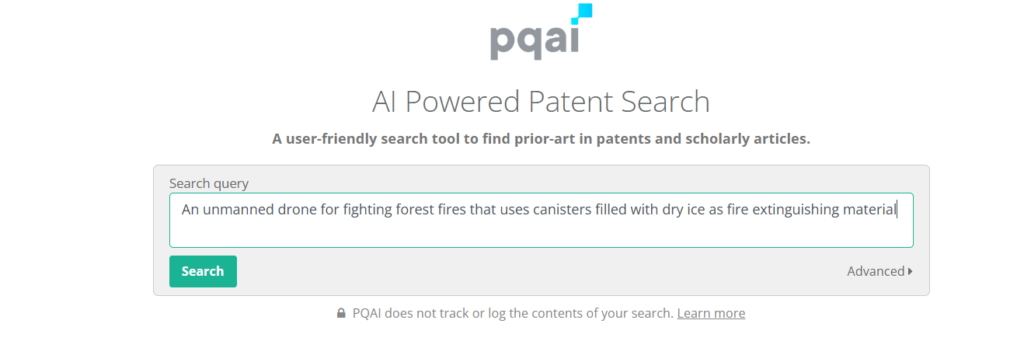
When we ran this query in PQAI, the engine returned 91 result combinations. Among them, two stood out as a clear illustration of how examiners might form a § 103 rejection:
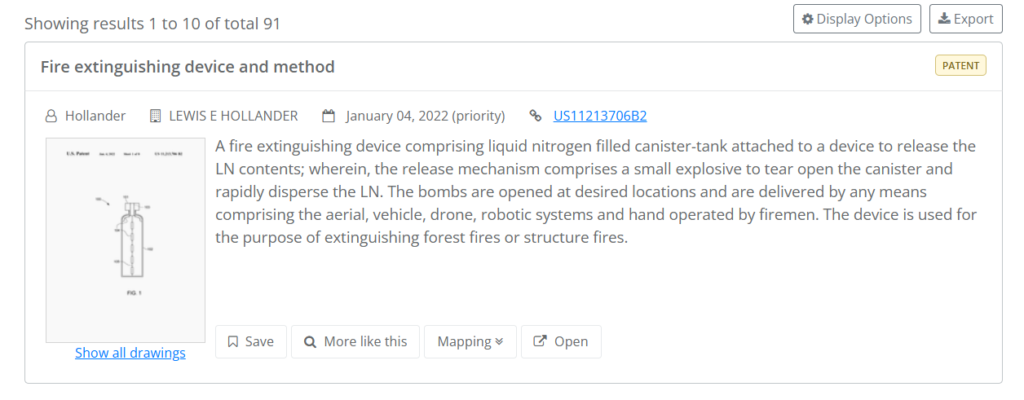
The US11213706B2 patent discloses a fire extinguishing device comprising liquid nitrogen-filled canisters. These canisters are designed to be rapidly dispersed using an explosive mechanism and can be delivered by aerial systems, including drones, vehicles, or robotic platforms.

Whereas the KR102597610B1 patent introduces a drone system equipped with fire-extinguishing liquid injection technology. The drone can approach fire scenes remotely and spray liquid directly at the fire site.
Taken together, these two references demonstrate exactly the kind of “obvious combination” an examiner could use to reject our query under § 103. One patent provides the specialized canister-based extinguishing mechanism, while the other provides the drone platform for aerial delivery. Combined, they align with the essence of our proposed invention.

This example shows why running a combinational prior art search before filing is so important. By surfacing results like these early, PQAI allows inventors and attorneys to fine-tune their invention, refine claim language, and avoid costly surprises during prosecution.
A 103 type rejection, also called an “obviousness rejection”, occurs when the examiner finds that your invention is not sufficiently inventive over what already exists. Importantly, this doesn’t require a single reference to match your idea word-for-word. Instead, the examiner may combine two or more prior art references and argue that together they make your invention an obvious improvement.
The USPTO applies three main tests when issuing a § 103 rejection:
This approach was cemented by the U.S. Supreme Court in KSR v. Teleflex (2007), which made it clear that examiners have flexibility to use logical reasoning, not just explicit teachings, when combining references.
For applicants, this means that even if no single prior art looks like your invention, examiners can still combine references to build an obviousness case. This is why § 103 is the most common reason for rejection at the USPTO.
The most effective way to lower the risk of a § 103 rejection is to anticipate the prior art combinations an examiner might rely on. PQAI enables this by combining semantic understanding with AI-powered search.
Instead of relying on keywords, it interprets your invention in plain language and maps it to relevant patents and technical literature worldwide. It then highlights references that could reasonably be combined, giving you early visibility into the same logic an examiner might apply.
As an open source project, PQAI is continually improved by a community of inventors, researchers, and practitioners, ensuring the tool evolves with the challenges of patent searching.
To demonstrate PQAI’s effectiveness, we validated its results against real-world patent prosecutions. We selected a set of applications that had received § 103 rejections and tested whether PQAI could surface the same prior art references. In every case, PQAI identified at least one of the examiner-cited references as part of its combinational results.
| Application Number | Publication Number | Priority Date | Assignee | Rejection Date* | Rejection Type | Publication No. Prior Art | PQAI Input |
| 16246472 | US10731375B2 | 7/6/16 | NABORS DRILLING TECH USA INC | 23/4/20 | 103 | US9027287B2 | Abstract |
| 15866107 | US10696381B2 | 9/1/18 | THE BOEING COMPANY,CHICAGO,IL,US | 15/4/20 | 103 | US5908174A | Claim 1 |
| 16451553 | US10754607B2 | 26/9/18 | QUALCOMM INCORPORATED,SAN DIEGO,CA,US | 16/4/20 | 103 | US6396329B1 | Abstract |
| 15712616 | US10762997B2 | 12/10/16 | KOREA ATOMIC ENERGY RESEARCH INSTITUTE,DAEJEON,KR | 22/4/20 | 103 | US20140205052A1 | Claim 1 |
| 14594517 | US10777098B1 | 12/1/15 | RAYLYNN PRODUCTS LLC,GROVE CITY,OH,US | 22/4/20 | 103 | US5121745A | Abstract |
| 16123902 | US10778561B2 | 8/9/17 | BROCADE COMMUNICATIONS SYSTEMS LLC,SAN JOSE,CA,US | 23/4/20 | 103 | US20130266307A1 | Abstract |
*Rejection dates are from USPTO prosecution records.
Below is a sample of two representative cases where PQAI mirrored examiner reasoning:
We picked up the abstract of the subject patent application US10731375 and ran it through PQAI.
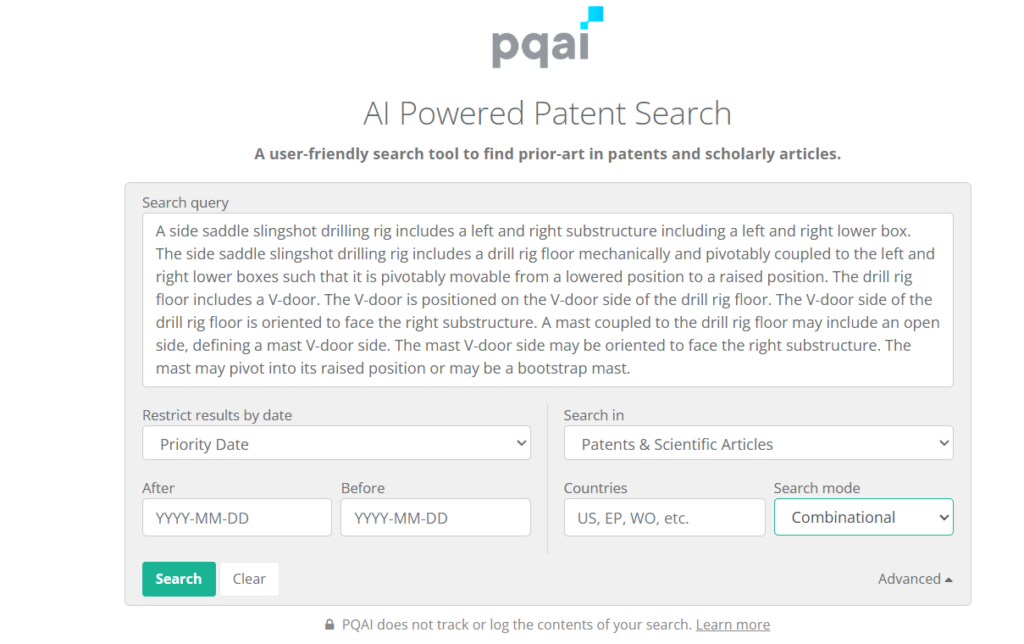
PQAI spotted a U.S. patent titled Fast transportable drilling rig system (US9027287B2) as one of the prior art references in its combinational results. This was also cited by the examiner in the rejection.
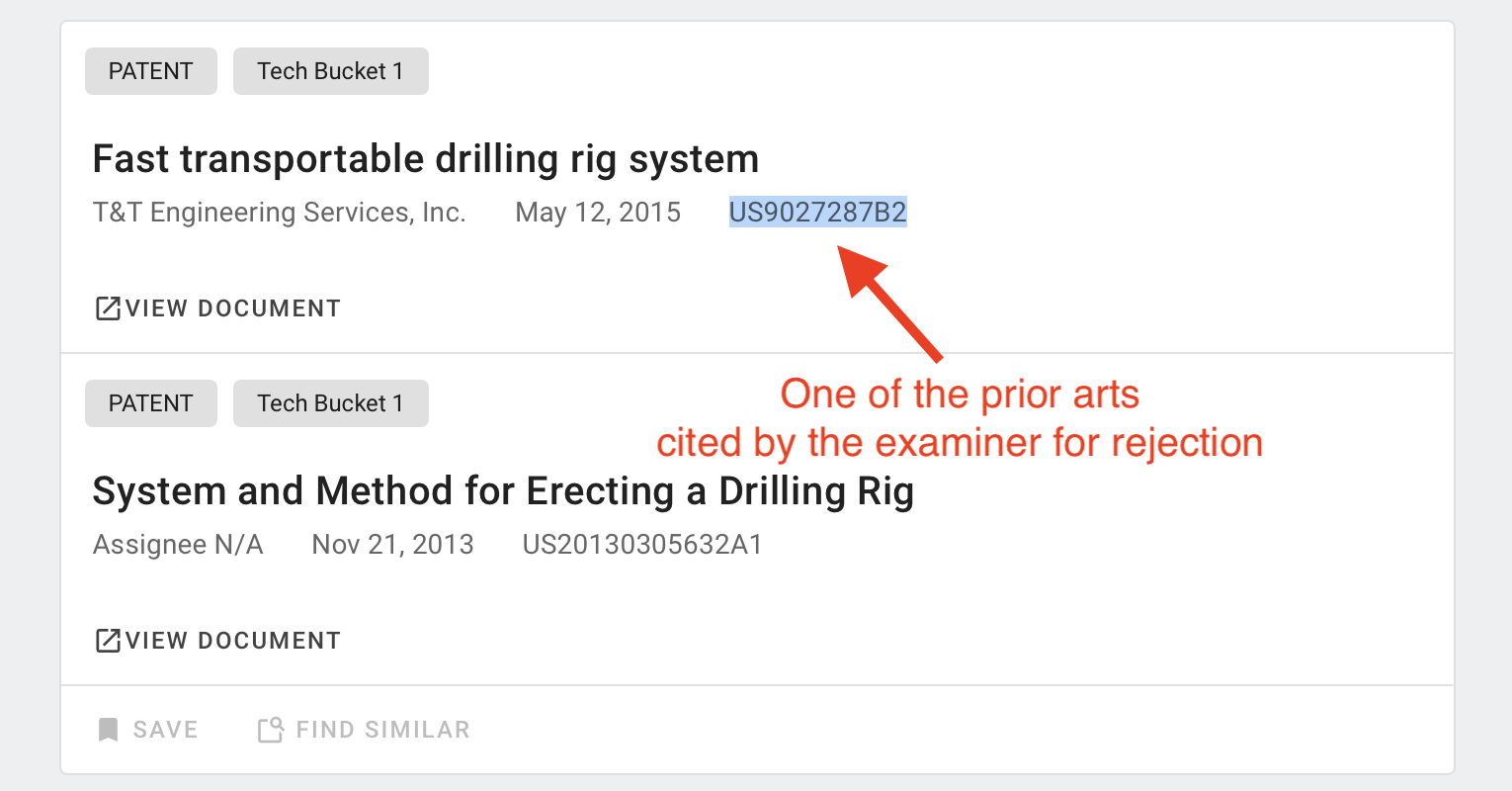
We picked up the claim for this application and ran it through PQAI.
Sidenote: When looking for prior art using PQAI for a particular patent, it’s best advised to put the invention query from any of these aspects in this order (along with the priority date filter):
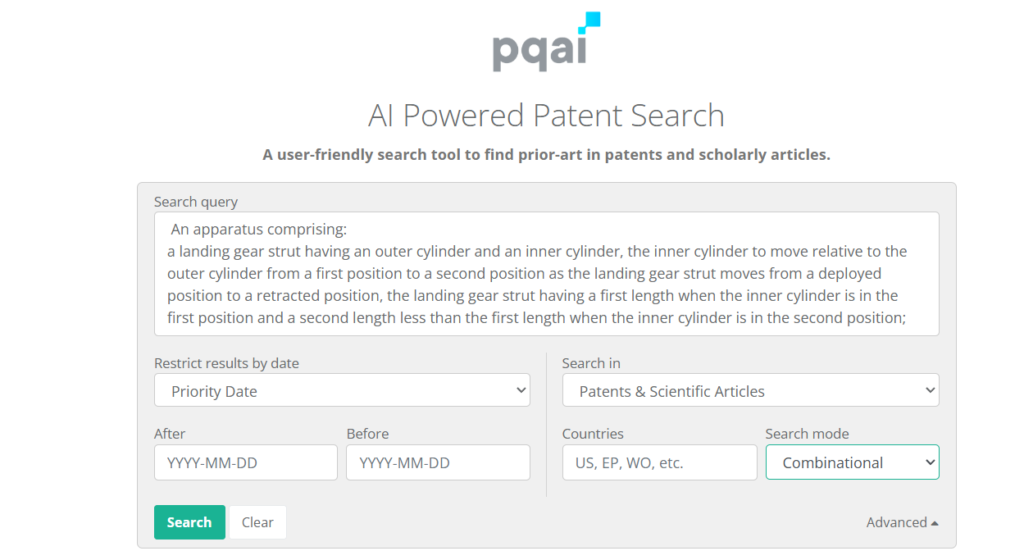
PQAI surfaced US5908174A as one of the results in its combinations. This same reference was also cited by the examiner to reject the application.
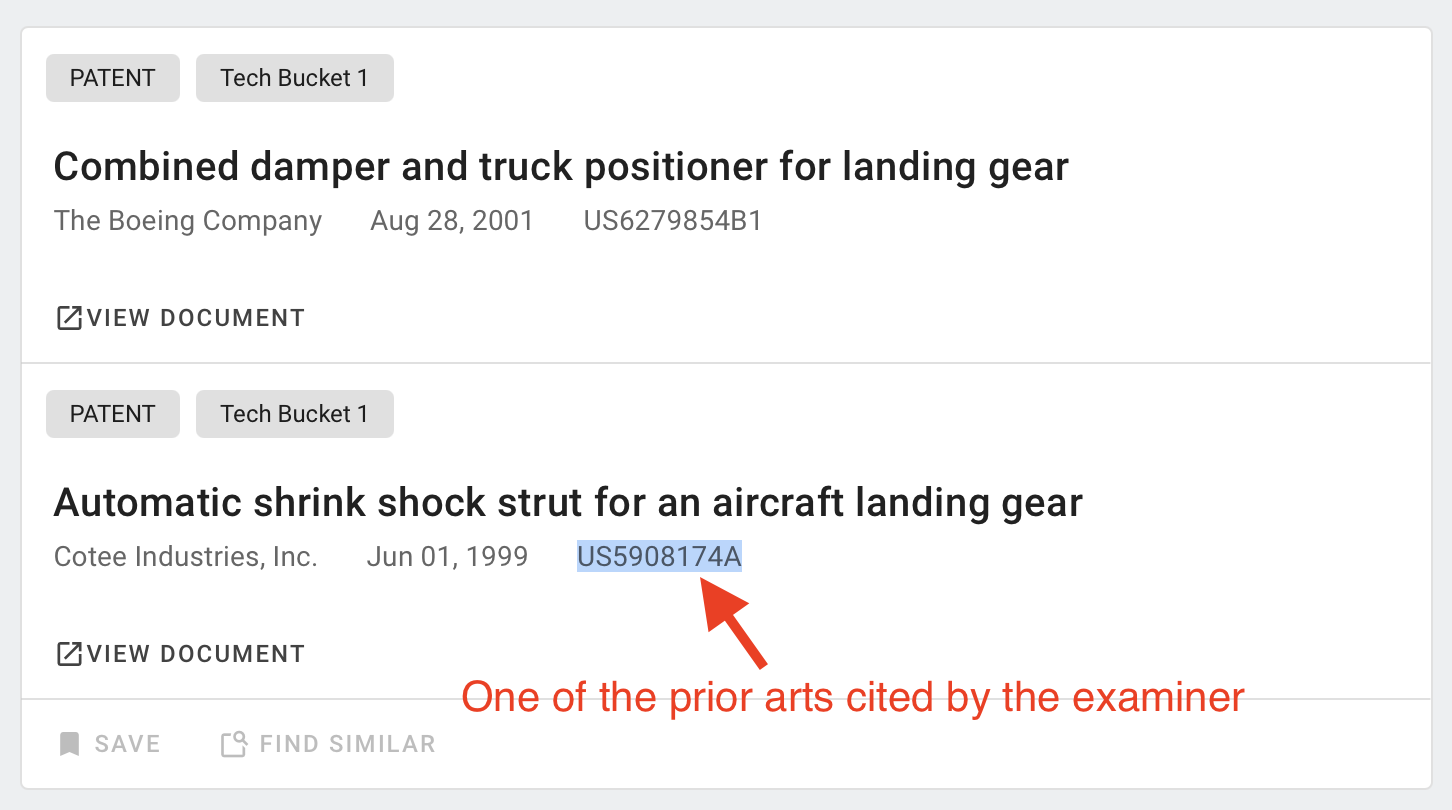
These examples show that PQAI can independently surface prior art references examiners actually relied on in type 103 rejections.
103 type rejections, based on combinational prior art, are among the most common barriers in the patenting process. But PQAI turns the table by letting you test your invention before they do.
Powered by AI-driven semantic mapping, PQAI goes beyond simple keyword matching to understand concepts and relationships.
Here is what sets PQAI apart from existing tools in the market:
PQAI is not just a search engine. It is an early warning system for innovators, attorneys, and R&D teams to reduce risk, refine claims, and file with confidence.
Running your idea through PQAI may be the smartest step you take before filing your patent application. What’s the wait for? Try the tool today!
At PQAI, we bring clarity to the world of patents. Through storytelling and insight, we simplify inventions so innovators, researchers, and businesses can learn from the past and build the future.
Share

You have already witnessed how powerful the PQAI API can be for semantic patent search. Now you want to bring that same intelligence into your
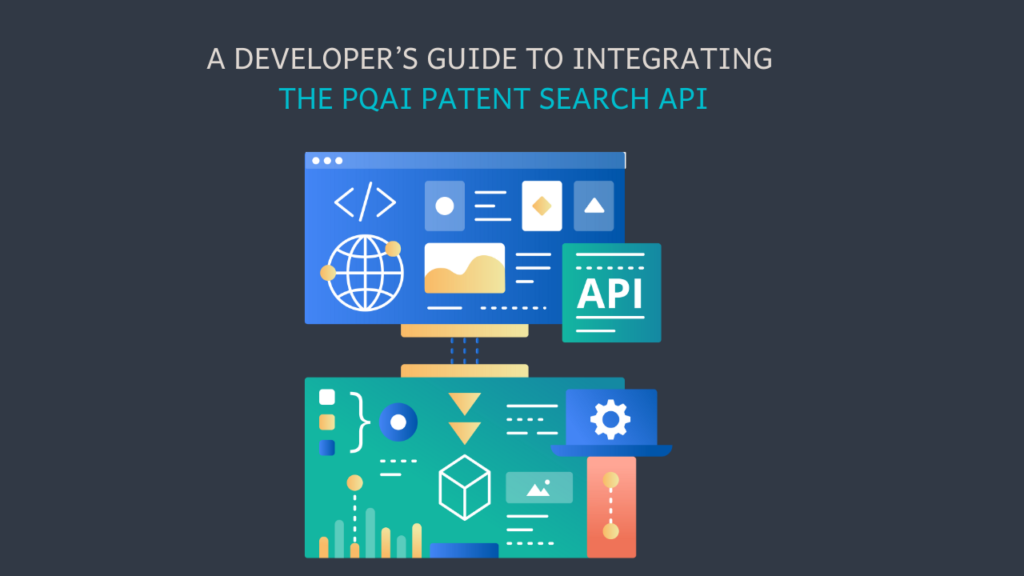
You have already explored what PQAI can do. Now you want to bring its semantic patent search into your own product or tool. Maybe you
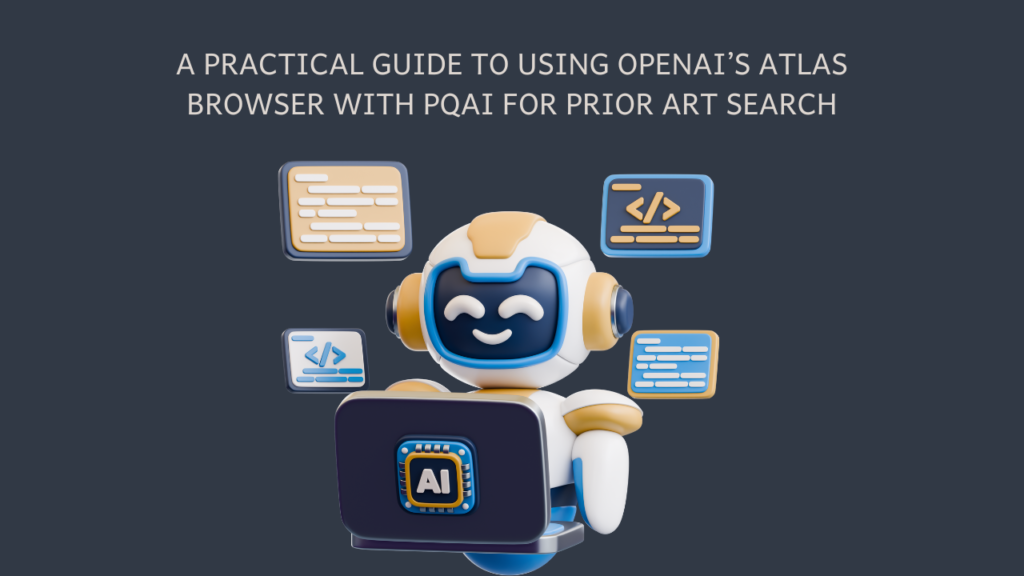
OpenAI’s Atlas browser marks a new milestone in AI-driven research. Research on the web has always been a bit awkward for AI. It could fetch
Dear PQAI Team,
We are pleased to express our support for PQAI and its mission to revolutionize patent searching through open-source, AI-driven solutions.
At [COMPANY NAME], we recognize the importance of accessible and efficient patent tools in fostering innovation and empowering inventors from diverse backgrounds. By supporting PQAI, we aim to contribute to the development of transparent, collaborative, and impactful solutions for the intellectual property community.
We kindly request the addition of [COMPANY NAME] to the official List of Supporters of PQAI.
Sincerely,
[CEO or Equivalent Name]
[Title]
[Company Name]
[Signature]